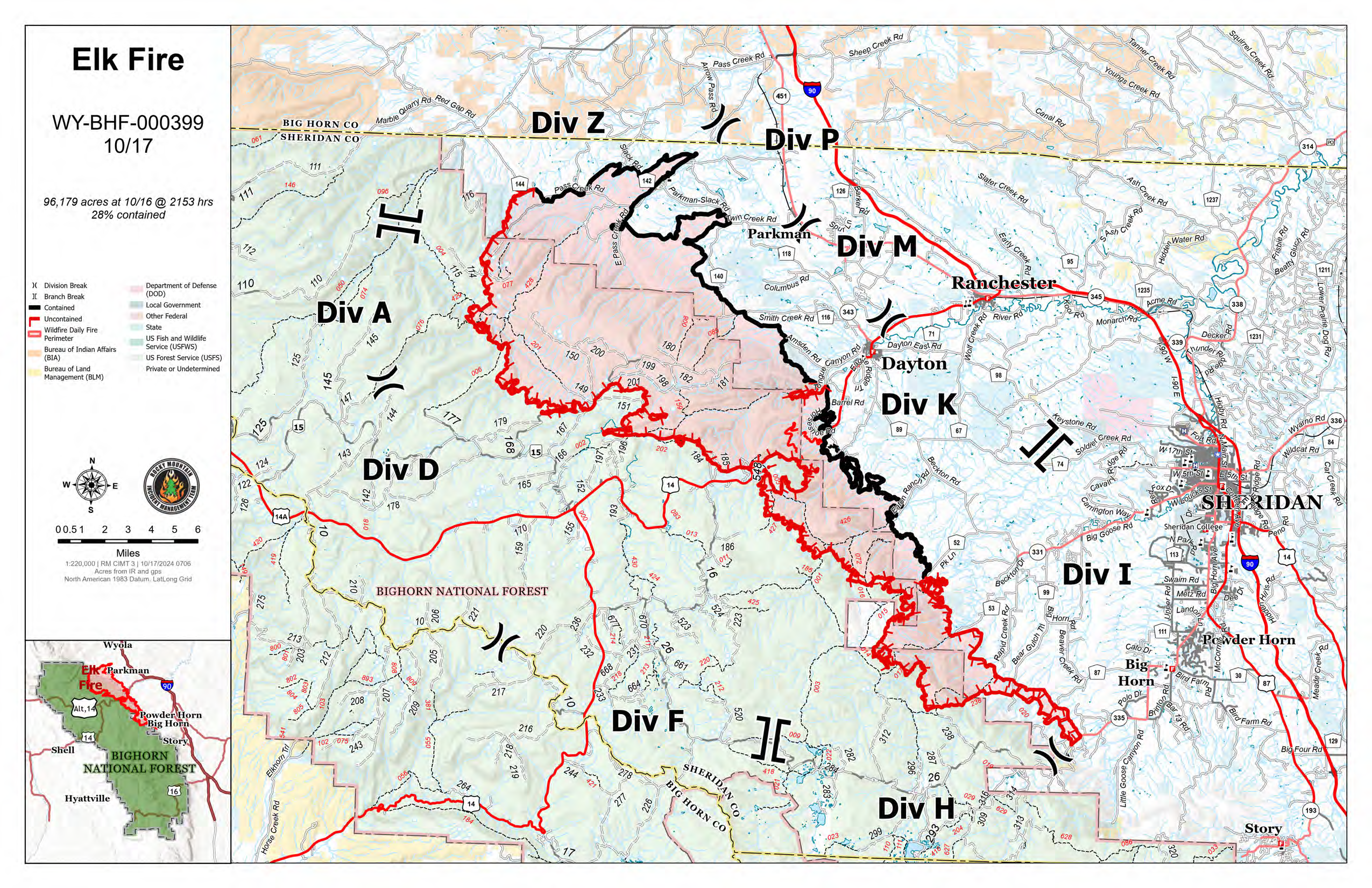According to inciweb.wildfire.gov, the Elk fire near Sheridan, Wyoming, has burned 96,179 acres and has reached 28% containment as of Oct. 17. Reports said in the last few days, the fire hasn’t progressed southward, despite producing abundant smoke Oct. 16.
Heat, very low humidity levels and southwest wind gusts reaching 30 miles per hour in higher elevations have led to a lot of fire activity in the northwest corner of the fire as of the last update. Precipitation is anticipated Oct. 17 and elevations above 7,000 feet are expecting snow. Despite this, the fire is expected to still smolder and produce some smoke.
According to an online news article, the U.S. Department of Agriculture has declared disaster areas in several Wyoming counties due to damages and loss from the wildfires. Those counties include: Albany, Goshen, Platte, Converse, Hot Springs, Sheridan, Crook, Johnson, and Weston. Those counties were the primary natural disaster areas, while nine neighboring counties were included as well: Big Horn, Fremont, Niobrara, Campbell, Laramie, Park, Carbon, Natrona, and Washakie counties.
Wyoming Gov. Mark Gordon said in a recent statement how grateful he is to the USDA for recognizing the size and scope of the wildfire impact has on the state’s agricultural producers. Typically this designation means emergency loans will be available to producers.
On Sept. 27, Gov. Gordon continued his executive order to ease oversize, overweight loads for livestock and feed transport, which lifts certain restrictions on vehicles. More information about the EO can be found on the governor’s website.
“Thankfully, new wildfire starts have curtailed and existing fires are well in hand, if not contained,” Gordon said. “However, the impacts for producers on-the-ground continue to be substantial, and I remain committed to alleviating barriers affecting Wyoming’s impacted livestock operations.”
Weather forecasts call for continued hot and dry conditions through the fall months.
Landowners and those recreating outside should check for fire bans and follow all local guidance.
The University of Wyoming has a page dedicated to wildfire matters and it aims to allow those affected by wildfire to find the resources they need before, during and after a fire. According to www.uwyo.edu/barnbackyard/resources/wildfire.html, there are many complexities and unique circumstances that frustrate simple, straightforward answers after a fire. Every landowner’s situation is unique.
There are suggestions for those affected as where to start and online resources collected in one place.
The Wyoming Stock Growers wildfire relief fund applications for assistance were accepted from Sept. 15 to Oct. 10. Notification of funding requests will be announced no later than Oct. 25. Depending on available funds, a second application period may be announced after Oct.15.
To donate to the WSG wildfire relief fund visit wysga.org/. The Wyoming Stock Growers Endowment Trust has announced the establishment of a Wildlife Relief Fund to assist Wyoming livestock producers who have been impacted by major fires in 2024. The Trust is a 501 (c) (3) nonprofit entity established by Wyoming Stock Growers in 1977 to ensure the future of Wyoming’s cattle industry through support for eligible programs that include keeping the next generation of ranchers on the land. In addition to funding provided by the Trust, the organization is seeking donations from businesses and individuals interested in assisting producers impacted by the fires. All donations are tax-deductible.
Kylene Scott can be reached at 620-227-1804 or [email protected].




